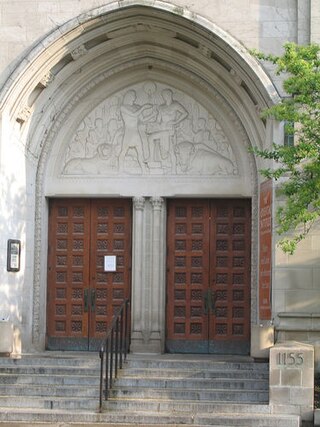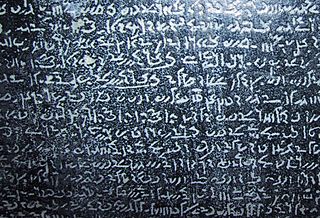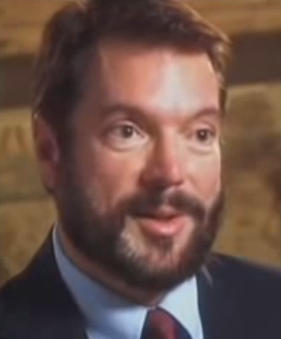Related Research Articles

The Egyptian language, or Ancient Egyptian, is an extinct branch of the Afro-Asiatic languages that was spoken in ancient Egypt. It is known today from a large corpus of surviving texts, which were made accessible to the modern world following the decipherment of the ancient Egyptian scripts in the early 19th century.

Seshat was the ancient Egyptian goddess of writing, wisdom, and knowledge. She was the daughter of Thoth. She was seen as a scribe and record keeper; her name means "female scribe". She is credited with inventing writing. She also became identified as the goddess of sciences, accounting, architecture, astronomy, astrology, building, mathematics, and surveying.

The Institute for the Study of Ancient Cultures, West Asia & North Africa, established in 1919, is the University of Chicago's interdisciplinary research center for ancient Near Eastern studies and archaeology museum. It was founded for the university by Egyptology and ancient history professor James Henry Breasted with funds donated by John D. Rockefeller Jr. It conducts research on ancient civilizations throughout the Near East, including at its facility, Chicago House, in Luxor, Egypt. The institute also publicly exhibits an extensive collection of artifacts related to ancient civilizations and archaeological discoveries at its on-campus building in Hyde Park, Chicago. According to anthropologist William Parkinson of the Field Museum, the ISAC's highly focused "near Eastern, or southwest Asian and Egyptian" collection is one of the finest in the world.
James Henry Breasted was an American archaeologist, Egyptologist, and historian. After completing his PhD at the University of Berlin in 1894 – the first American to obtain a doctorate in Egyptology – he joined the faculty of the University of Chicago. In 1901 he became director of the Haskell Oriental Museum at the university, where he continued to concentrate on Egypt. In 1905 Breasted was promoted to full professor, and held the first chair in Egyptology and Oriental History in the United States.
As used for Egyptology, transliteration of Ancient Egyptian is the process of converting texts written as Egyptian language symbols to alphabetic symbols representing uniliteral hieroglyphs or their hieratic and demotic counterparts. This process facilitates the publication of texts where the inclusion of photographs or drawings of an actual Egyptian document is impractical.

El Lahun. It was known as Ptolemais Hormos in Ptolemaic Egypt.

Demotic is the ancient Egyptian script derived from northern forms of hieratic used in the Nile Delta. The term was first used by the Greek historian Herodotus to distinguish it from hieratic and hieroglyphic scripts. By convention, the word "Demotic" is capitalized in order to distinguish it from demotic Greek.

The Greek Magical Papyri is the name given by scholars to a body of papyri from Graeco-Roman Egypt, written mostly in ancient Greek, which each contain a number of magical spells, formulae, hymns, and rituals. The materials in the papyri date from the 100s BCE to the 400s CE. The manuscripts came to light through the antiquities trade, from the 1700s onward. One of the best known of these texts is the Mithras Liturgy.
Richard Anthony Parker was a prominent Egyptologist and professor of Egyptology. Originally from Chicago, he attended Mt. Carmel High School with acclaimed author James T. Farrell. He received an A.B. from Dartmouth College in 1930, and a Ph.D. in Egyptology from the University of Chicago in 1938. He then went to Luxor, Egypt to work as an epigrapher with the University of Chicago's Epigraphic and Architectural Survey, studying the mortuary temple of Ramses III. When World War II necessitated a temporary halt to the project, Parker came back to Chicago to teach Egyptology at the university. In 1946, he returned to Egypt to continue his work on the epigraphic survey, and soon rose to the position of field director.

The Graffito of Esmet-Akhom, also known by its designation Philae 436 or GPH 436, is the last known ancient Egyptian inscription written in Egyptian hieroglyphs, carved on 24 August 394 AD. The inscription, carved in the temple of Philae in southern Egypt, was created by a priest named Nesmeterakhem and consists of a carved figure of the god Mandulis as well an accompanying text wherein Nesmeterakhem hopes his inscription will last "for all time and eternity". The inscription also contains a text in the demotic script, with similar content.
Hurbayt is a town in Sharqia Governorate of Egypt.
The Instruction of Ankhsheshonq (or Ankhsheshonqy) is an Ancient Egyptian papyrus that has been tentatively dated to the Ptolemaic period, although the content may be earlier in origin. It contains an introductory narrative and a list of maxims on many topics, its style has been described as pragmatic and humorous. The papyrus was obtained in 1896 by the British Museum (papyrus #10508).
Peter John Parsons, was a British classicist and academic specialising in papyrology. He was Regius Professor of Greek at the University of Oxford from 1989 to 2003.

Robert Kriech Ritner was an American Egyptologist most recently at the Oriental Institute of the University of Chicago.
Demotiс Egyptian language was the state of the Egyptian language used since 650 BC up to approx. 450 year AC. in the New Kingdom of Egypt and Third Intermediate Period of Egypt. The formation and development of the demotika language as a separate language from the New Egyptian was strongly influenced by Aramaic and Ancient Greek.
Wendy Rosalind James, was a British social anthropologist and academic. She was Professor of Social Anthropology at the University of Oxford from 1996 to 2007, and President of the Royal Anthropological Institute from 2001 to 2004.
Theban Tomb TT72 is located in the Theban Necropolis, on the west bank of the Nile, opposite to Luxor. It was the tomb of Re, who was the First Prophet of Amun in the Mortuary temple of Thutmosis III. The tomb is located in the necropolis area around Sheikh Abd el-Qurna and dates to the time of Amenhotep II.

The Theban Tomb TT120 is located in Sheikh Abd el-Qurna. It forms part of the Theban Necropolis, situated on the west bank of the Nile opposite Luxor. The tomb is the burial place of the ancient Egyptian official Ahmose, who was the second prophet of Amun-Ra at Karnak and later the first prophet of Amun at Henqet-Ankh, the mortuary temple of Tuthmosis III at Qurnah during the reign of the Tuthmosis III.
Renpetneferet is a minor goddess who is credited as being either the sister or the wife of Imhotep in Late Period Egyptian texts. There is no evidence of an individual by this name existing during the reign of King Djoser, although similar names were being used for women during the fourth dynasty.
Ola El Aguizy is an Egyptian Egyptologist and Emeritus Professor at the University of Cairo. An expert in Demotic, she has published widely on the language. Since 2005, she has led excavations at Saqqara, uncovering the tombs of several notable figures connected to Ramesses II. In 2015, her colleagues presented her with a Festschrift entitled Mélanges offerts à Ola el-Aguizy.
References
- 1 2 "Janet H. Johnson". Department of Near Eastern Languages and Civilizations. University of Chicago. Retrieved 12 April 2018.
- 1 2 3 Johnson, Janet H . (2015). "CURRICULUM VITAE". chicago.academia.edu. Retrieved 12 April 2018.
- ↑ "Directors of the Oriental Institute". The Oriental Institute. University of Chicago. Retrieved 12 April 2018.
- ↑ Ritner, Robert K., ed. (2018). Essays for the Library of Seshat: Studies Presented to Janet H. Johnson on the Occasion of Her 70th Birthday. Chicago: Oriental Institute Press. ISBN 978-1614910329.